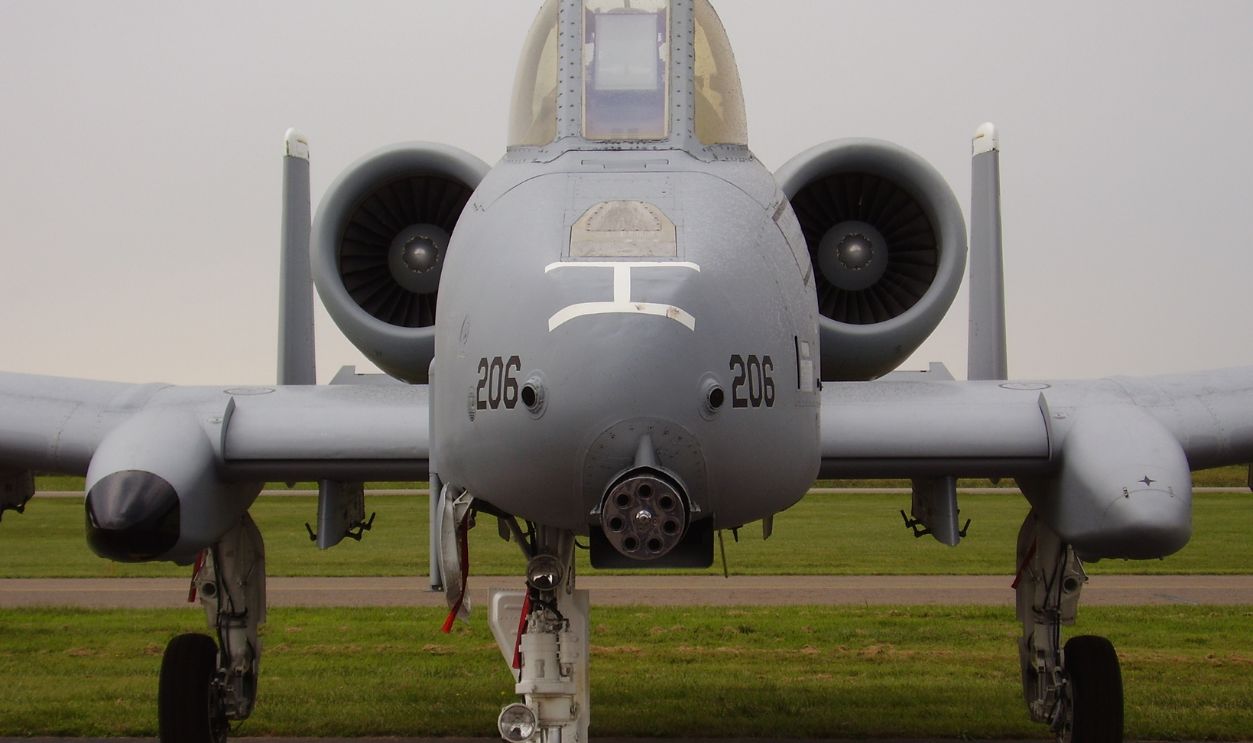One Of A Kind
Nothing is quite as exciting as flying the A-10 Thunderbolt II, also known as the Warthog. This plane's insane specs and even crazier history make it truly one of a kind.

Official Name Vs. Nickname
The official name of this fighter plane is a Fairchild Republic A-10 Thunderbolt II. The air force named this plane after its World War II predecessor, the P-47 Thunderbolt. But why was it nicknamed the Warthog or the Hog?
 Master Sgt. William Greer, Wikimedia Commons
Master Sgt. William Greer, Wikimedia Commons
Why It’s Called The Warthog
The first reason was appearance; the A-10 has a blunt nose and a rugged build, similar to a warthog. The second reason is its sound. This aircraft carries a powerful GAU-8/A Avenger 30mm Gatling gun that produces a distinctive “BRRRRRT” sound.
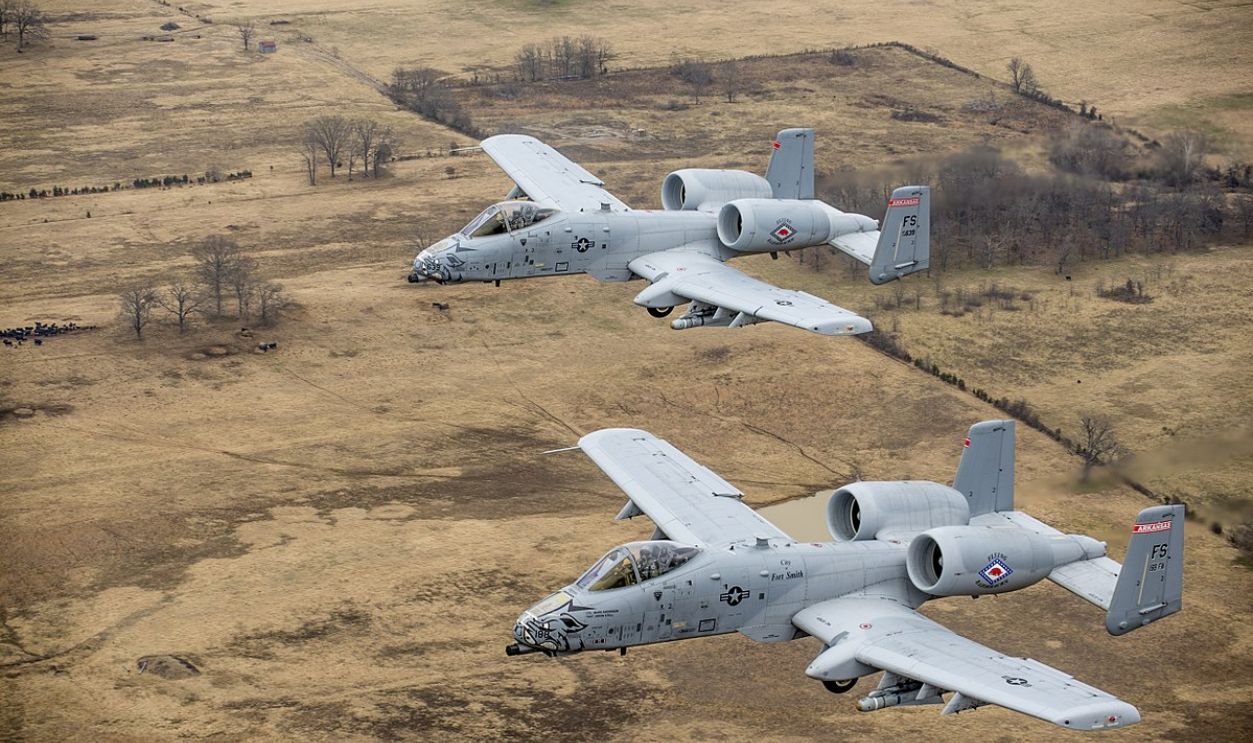 Senior Airman Matthew Bruch, Wikimedia Commons
Senior Airman Matthew Bruch, Wikimedia Commons
Let’s Talk Specs
Aviation training always teaches the aircraft’s specs because it helps pilots fully understand its operation. So, to start us off, the Warthog is 53 feet 4 inches long, with a wingspan of 57 feet 6 inches and a height of 14 feet 8 inches.
In Aviation, Weight Is Calibrated In Two Ways
Since this is a highly specialized close air support aircraft that carries munitions, aviators calculate the weight as empty weight and maximum takeoff weight. The former is approximately 24,959 lb, and the latter is 46,000 lb.
 Master Sgt. Ed Boyce, Wikimedia Commons
Master Sgt. Ed Boyce, Wikimedia Commons
Its Speed?
The A-10’s maximum sea-level speed is 381 knots, and its cruise speed is 300 knots. It can reach heights of 45,000 feet and cruise unstoppably for a maximum of 2,240 nmi.
 Jim Haseltine, Wikimedia Commons
Jim Haseltine, Wikimedia Commons
The A-10’s Power Plant
By power plant, we mean the engines and their thrust. The Warthog has two General Electric TF34-GE-100 turbofan engines, each with a thrust of 9,065 pounds.
 Angesteller der USAF, Wikimedia Commons
Angesteller der USAF, Wikimedia Commons
Next: Armament
Considering it’s a highly specialized close-air support aircraft, not speaking about the arms would simply be wrong. One 30 mm GAU-8/A seven-barrel Gatling gun can fire up either 2,100 or 4,200 rounds per minute.
 Tech. Sgt. Fernando Serna, Wikimedia Commons
Tech. Sgt. Fernando Serna, Wikimedia Commons
The Bullets It Spits Are Accurate And Fast
A pilot flying this machine can aim and hit accurately and even destroy a tank from over 21,325 feet away. For a better perspective, that’s like stacking 19 Eiffel Towers on each other, crazy, right?
 Greg L. Davis, Wikimedia Commons
Greg L. Davis, Wikimedia Commons
The Warthog Can Carry This Much Ammo
Remember the maximum weight we spoke of earlier? Well, 16,000 pounds of that is ammo. It fits in eleven store pylons—eight under-wing and three under-fuselage (under the main body of an aircraft). These include AGM-65 Maverick missiles.
 Rama, CC BY-SA 2.0 FR, Wikimedia Commons
Rama, CC BY-SA 2.0 FR, Wikimedia Commons
The Cockpit And Avionics
Like most fighter jets, the Warthog carries one pilot in a titanium-protected 3.8 cm thick cockpit called the “bathtub.” The Avionics include a heads-up display, inertial navigation systems, GPS, and advanced targeting systems.
 Steven Fine, CC BY-SA 4.0, Wikimedia Commons
Steven Fine, CC BY-SA 4.0, Wikimedia Commons
What It Takes To Fly One
Now that you understand the mechanics let’s examine the pilot’s skills because flying such a machine requires quite a bit of training. Ask Lt. Col. John “Karl” Marks, who happens to be the most experienced A-10 pilot in the U.S. Air Force.
What You Need To Fly The A-10
You need a bachelor’s degree. The major can vary, but mathematics or aviation must be on the transcript. Next, get official training with one of these: the Air Force Academy, the Air Force ROTC, or the Officer Training School.
 Master Sgt. William Greer, Wikimedia Commons
Master Sgt. William Greer, Wikimedia Commons
Never-ending Training
After completing the above training, you will spend another year under the Undergraduate Pilot Training (UPT) program, which finally qualifies you for a special aircraft assignment. If you are lucky, you get to fly the A-10.
 MSgt Stefan Alford, Wikimedia Commons
MSgt Stefan Alford, Wikimedia Commons
Gear Up
After aircraft knowledge and training comes experience. Before you jump in, you need a fire-resistant flight suit, a helmet with a heads-up display, and an oxygen mask for communication and easy breathing.
 Arpingstone, Wikimedia Commons
Arpingstone, Wikimedia Commons
A Set Of Special Gear Follows
You’ll also need a G-suit to prevent G-induced Loss Of Consciousness. Did we mention that the craft can reach 5G (gravitational force equivalent)? That 5G force feels like five times your weight. Over this, you’ll also have survival equipment for emergencies.
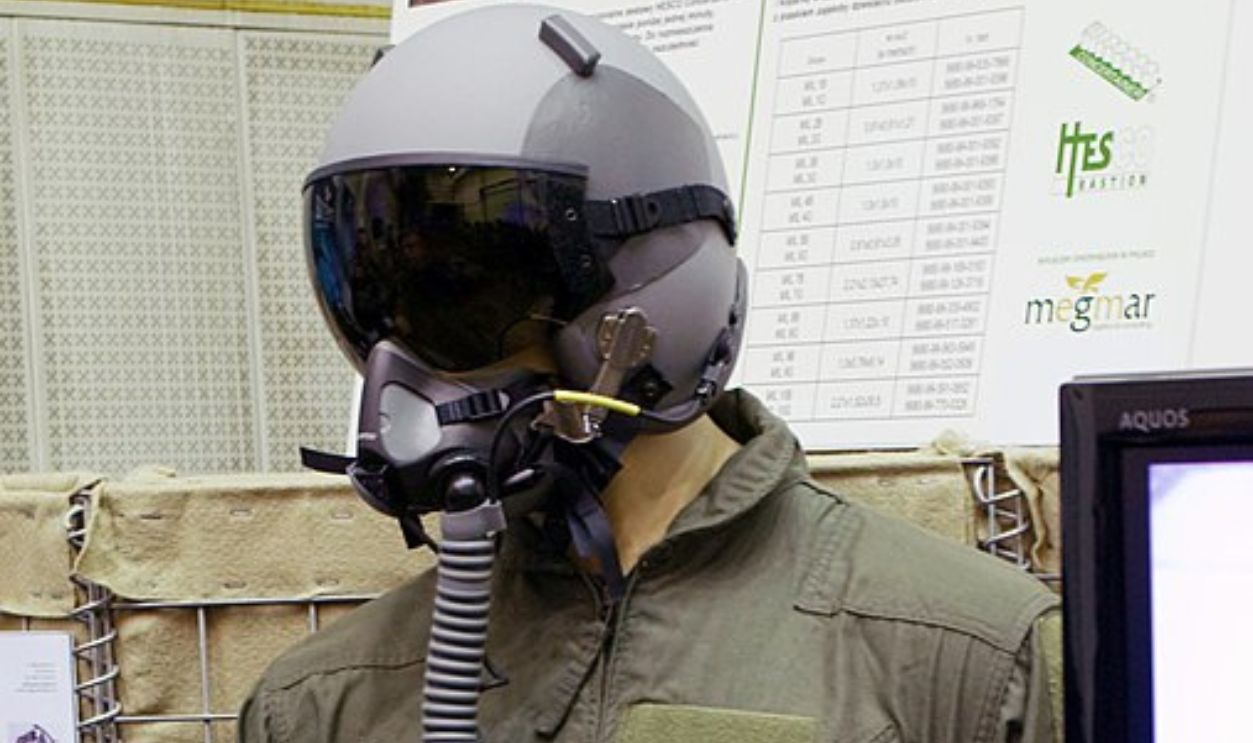 Adam Kliczek, CC-BY-SA-3.0, Wikimedia Commons
Adam Kliczek, CC-BY-SA-3.0, Wikimedia Commons
Ready To Fly
To get into the A-10, grab a ladder and hop on. Everything you need, including navigation and other controls, is within arms' length, literally. Then, you initiate the pre-flight checks of all systems, making sure everything is working fine—fuel, ammo, and navigation.
 A1C JONATHAN SNYDER, Wikimedia Commons
A1C JONATHAN SNYDER, Wikimedia Commons
Starting The Aircraft
Engage the engine start sequence, monitor various indicators confirming engine operations, and then proceed to taxi to the runway. Ensure you maintain consistent and clear communication with air traffic control. They will guide you on how to run additional checks.
 Tech. Sgt. Cecilio M. Ricardo Jr, Wikimedia Commons
Tech. Sgt. Cecilio M. Ricardo Jr, Wikimedia Commons
Get Airborne
Once you get on a runway, pull back on the control stick to lift off. The takeoff speed is usually around 138 mph. If you are accelerating at a constant rate, you’ll be airborne in just 30 to 40 seconds.
 Chief Master Sgt. David L. Stuppy, Wikimedia Commons
Chief Master Sgt. David L. Stuppy, Wikimedia Commons
In-Flight Maneuvering
Being a close air support craft, you will be flying the A-10 in relatively lower altitudes, and that means you have to be a pro at low-speed flying and making sharp turns to dodge flying bullets or missiles coming your way.
 Master Sgt. Blake R. Borsic, Wikimedia Commons
Master Sgt. Blake R. Borsic, Wikimedia Commons
In Mission Operations
After going airborne and ensuring everything works well, you’ll start flying towards the target. As the pilot, you are obligated to maintain communication with your commander and any other pilots you’re in combat with.
 Master Sgt. Mark Bucher, Wikimedia Commons
Master Sgt. Mark Bucher, Wikimedia Commons
Your Commander Guides You From The Ground Level
The team on the ground, led by your commander, monitors the battlefield through its multifunctional displays. It receives every piece of intel in real time, ensuring accuracy when the action begins.
 Łukasz Golowanow, Wikimedia Commons
Łukasz Golowanow, Wikimedia Commons
It’s Action Time
Once you get to the target zone, it’s go time. But hold on a minute. Before making a move, you must liaise with ground forces, often through a Joint Terminal Attack Controller (JTAC). This coordination ensures that everything is going according to plan. Noah Wulf, CC BY-SA 4.0, Wikimedia Commons
Noah Wulf, CC BY-SA 4.0, Wikimedia Commons
The First Kind Of Attack Is The Strafing Runs
The first attack you can make is strafing runs using the 30mm GAU-8/A Avenger cannon. This is when you fly low and slow so that you can precisely target enemy ground forces, vehicles, and trails.
 Mrkoww, CC BY 3.0, Wikimedia Commons
Mrkoww, CC BY 3.0, Wikimedia Commons
The Cannon Fires….
The 30mm GAU-8/A Avenger can fire up to 3,900 rounds a minute, thanks to its hydraulically driven seven-barrel Gatling-style autocannon. Sounds lethal, right? Wait until you hear the ammo it features.
 Matt Zalewski, CC BY 3.0, Wikimedia Commons
Matt Zalewski, CC BY 3.0, Wikimedia Commons
The PGU-14/B Armor Piercing Incendiary (API)
API is a formidable piece of ammo; it contains a lightweight, high-density penetrator made of depleted uranium that ignites upon impact. This bullet can penetrate heavy armor, even on tanks and other armored vehicles.
 Tech. Sgt. Michael D. Morford, Wikimedia Commons
Tech. Sgt. Michael D. Morford, Wikimedia Commons
The PGU-13/B High Explosive Incendiary (HEI)
This round contains a high-explosive charge and a standard M505 fuze that detonates upon impact but with added spice. Once the round hits a surface, it fragments into tiny lethal missiles, causing more damage.
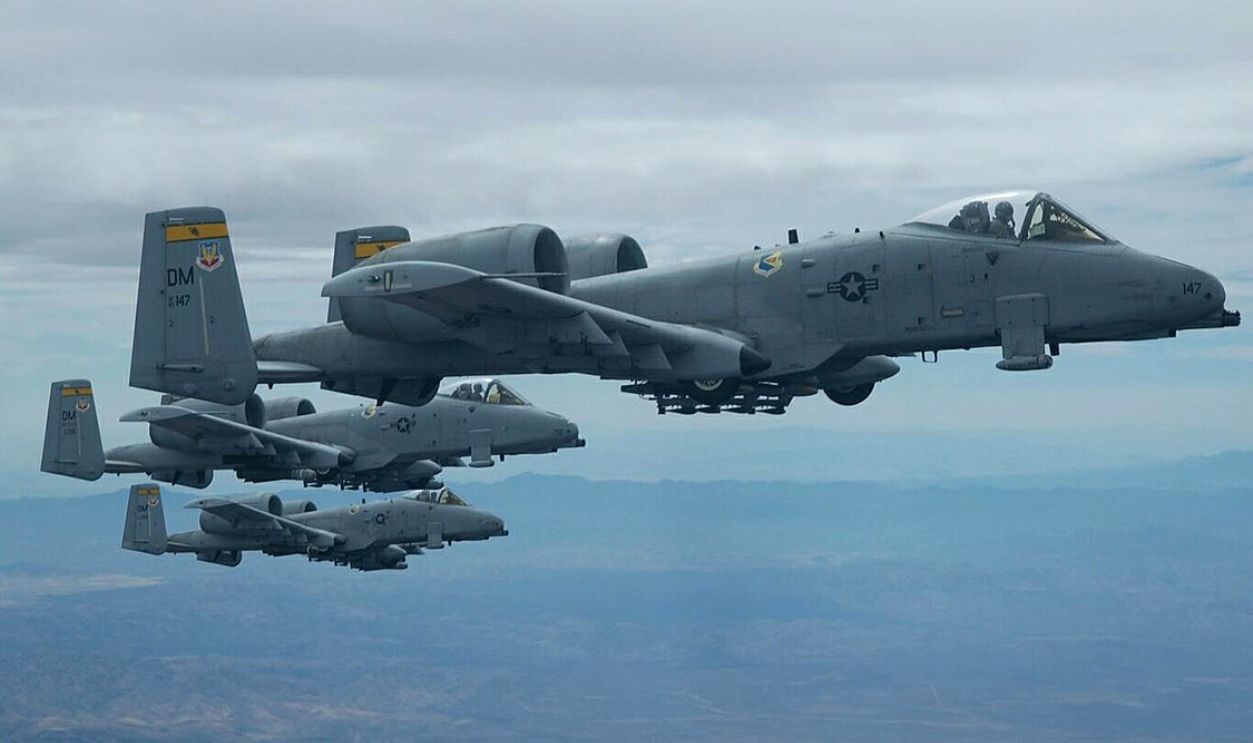 Christina D. Ponte, Wikimedia Commons
Christina D. Ponte, Wikimedia Commons
Second Attack Type: Air Raid Missions
Now, here is where things start going KaBOOM! In shelling missions, The Warthog releases Mk-82 and Mk-84. The Mk-82 is a 500-pound drop with a streamlined steel casing filled with 192 pounds of Tritonal high explosive. The Mk-84 is even more deadly.
 Cliff, CC BY 2.0, Wikimedia Commons
Cliff, CC BY 2.0, Wikimedia Commons
The Mk-84 Is Larger
This ammo is also in a streamlined steel casing filled with 945 pounds of Tritonal, weighing 2,000 pounds. Dropping this on the ground can create a hole 50 feet wide and 36 feet deep. It penetrates about 15 inches through metal and 11 feet on concrete.
 Staff Sgt. Emily Farnsworth, CC0, Wikimedia Commons
Staff Sgt. Emily Farnsworth, CC0, Wikimedia Commons
Rocket Attacks
Rocket attacks are another ambush that the Warthog can unleash on its enemy. The first rocket is the Hydra 70, which is high-explosive, anti-tank (destroys tanks), and is able to mask its movement. These versatile rockets completely obliterate light vehicles.
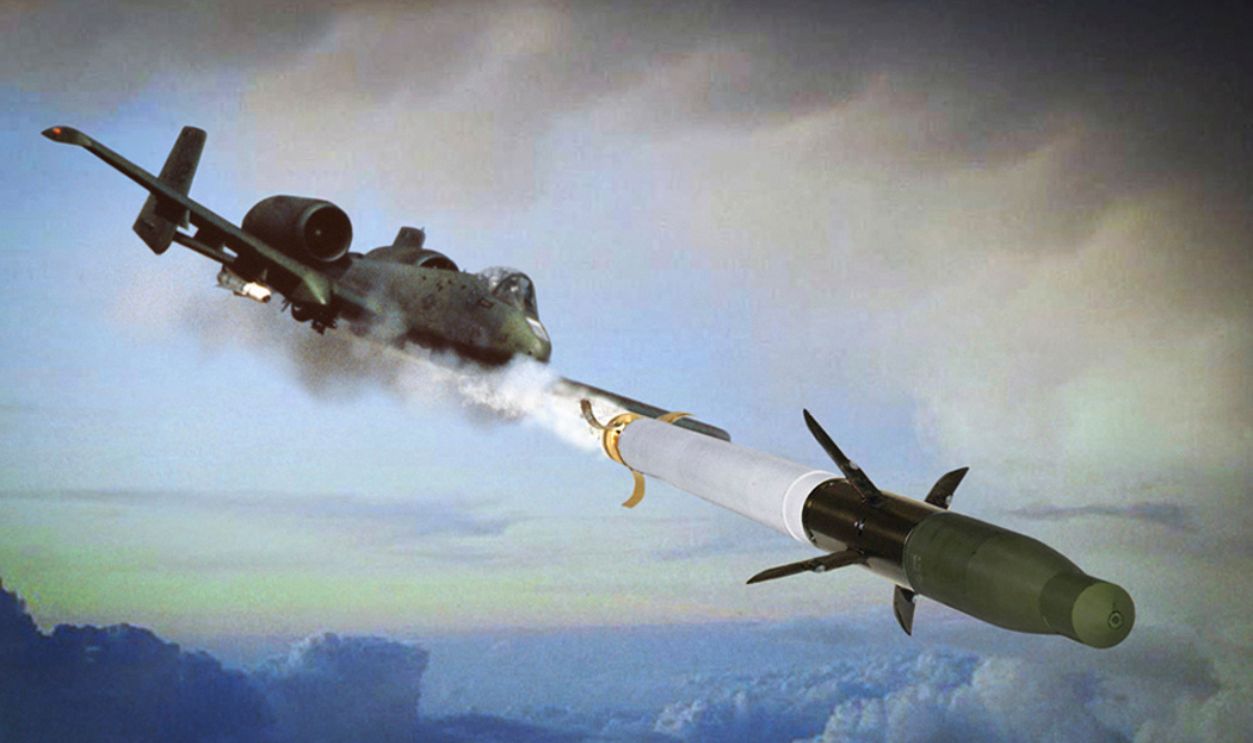 Samuel King, Wikimedia Commons
Samuel King, Wikimedia Commons
The Other Rocket Is The Zuni Rockets
The Zuni is larger and packs a punch; you’ll feel its vibration through your body as you release it. Because of its size, this one destroys bigger targets, like enemy camps.
 Cliff, CC BY 2.0, Wikimedia Commons
Cliff, CC BY 2.0, Wikimedia Commons
Missile Attacks
You can also deliver the precision-guided missile AGM-65 Maverick for close air support. The varying types are infrared, which tracks heat; electro-optical, which uses electro-optical sensors; and laser-guided, which tracks a laser designator. This type flattens bunkers and vehicles.
 Air National Guard, CC BY-SA 4.0, Wikimedia Commons
Air National Guard, CC BY-SA 4.0, Wikimedia Commons
Then There Is The Aim-9 Sidewinder Missile
When you are trailing an enemy jet or have one within your view, the AIM-9 Sidewinder delivers. Even though the A-10 is a ground-attack craft, this missile protects you in air-to-air combat.
The Challenges?
The smoke from a cannon firing 3,900 rounds per minute produces clouds of smoke that can temporarily obscure your visibility. However, engineers had anticipated this and implemented the following.
 SrA Christina D. Ponte, Wikimedia Commons
SrA Christina D. Ponte, Wikimedia Commons
Strategic Cannon Placement
Instead of placing the GAU-8/A cannon in the center, engineers placed it a few inches to the side, and this directed the smoke away from the pilot’s line of sight.
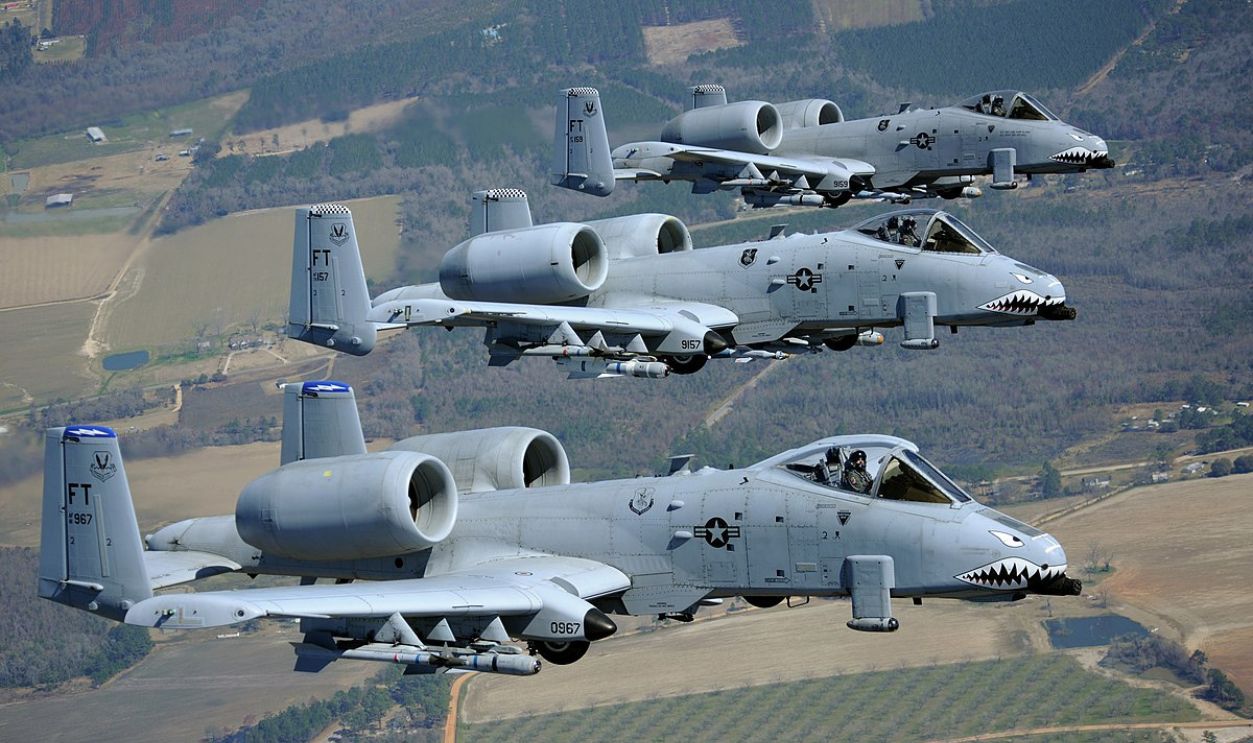 United States Air Force, Wikimedia Commons
United States Air Force, Wikimedia Commons
Engines Are Set High On The Fuselage
The A-10 engineers have also mounted the engines high on the craft’s body so that smoke is not ingested into them. This, in turn, reduces the engine blowing back smoke to block your view.
 Sgt. Joseph Kapinos, Wikimedia Commons
Sgt. Joseph Kapinos, Wikimedia Commons
It’s Also Your Job To Keep The Smoke In Check
During your training, you’ll also be instructed to fire the cannon in short bursts, in intervals of one to two seconds. Your training will also encompass the use of advanced avionics to maintain situational awareness even when visibility is low.
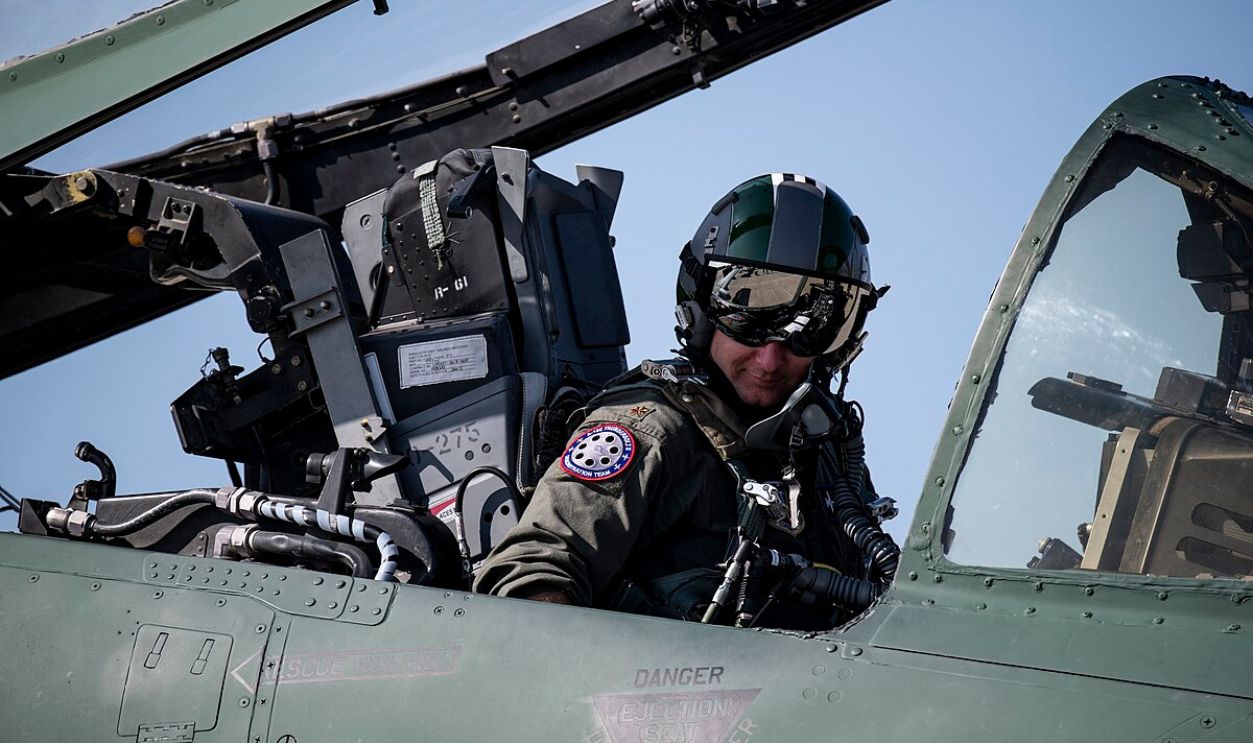 Kristine Legate, Wikimedia Commons
Kristine Legate, Wikimedia Commons
What Happens If Ammo Runs Out
Suppose you run out of ammo. You start by assessing the situation: is there an immediate threat? While this happens, keep communication with your wingmen and ground forces for a status update.
 Sergeant Michael Battles, Wikimedia Commons
Sergeant Michael Battles, Wikimedia Commons
Next, Reposition and Check Systems
After you confirm you are safe from enemy fire, reposition while maintaining situational awareness and check your systems, especially after a cannon, rocket, or missile has dislodged. Finally, return to base and prep for landing.
 Sgt. Aaron Allmon, Wikimedia Commons
Sgt. Aaron Allmon, Wikimedia Commons
How To Land The Warthog
Once you have the landing runway in sight, align the aircraft with the runway and slow down to about 200 knots. Lower the landing gear, lock it, and steadily reduce your speed to 170, then 150 knots using the speed breaks or spoilers.
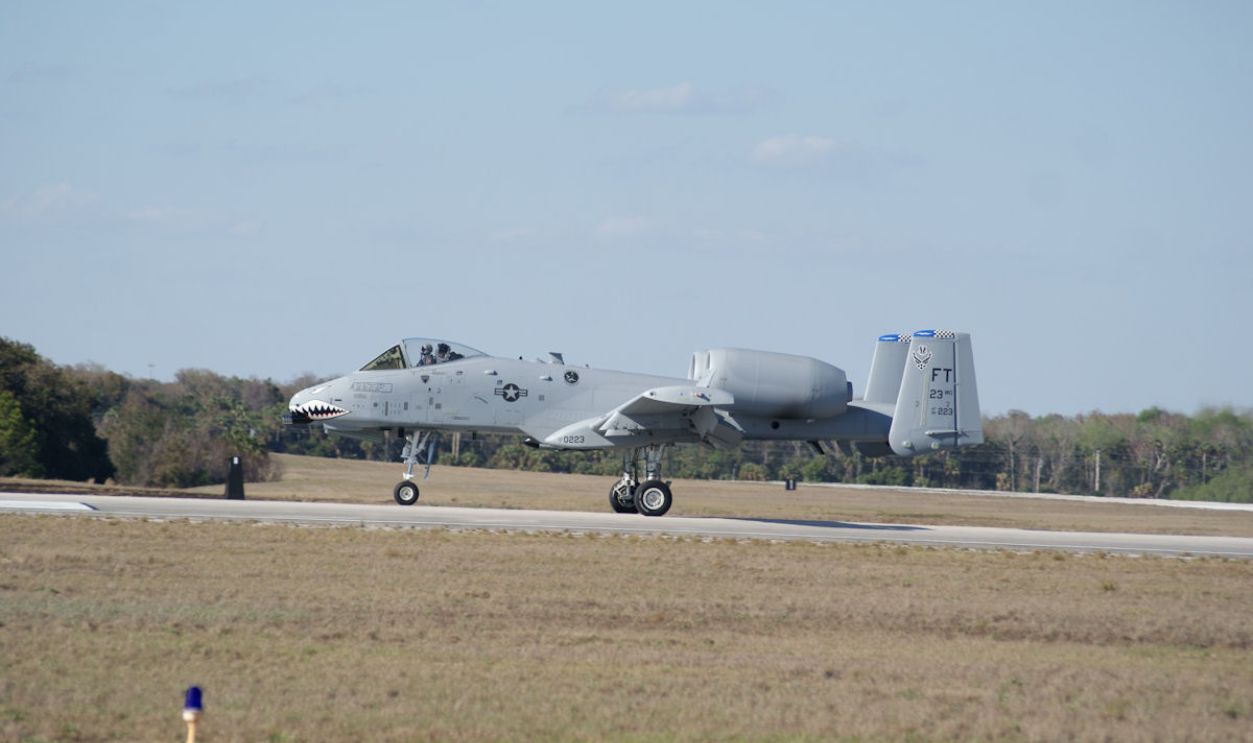 Valder137, CC BY 2.0, Wikimedia Commons
Valder137, CC BY 2.0, Wikimedia Commons
Descend, Flare, Touchdown
Keep the nose slightly down and make adjustments as you descend. When you draw near the runway, gently pull back on the control stick to lift the nose a few inches. This is flaring, and it reduces speed further before you touchdown.
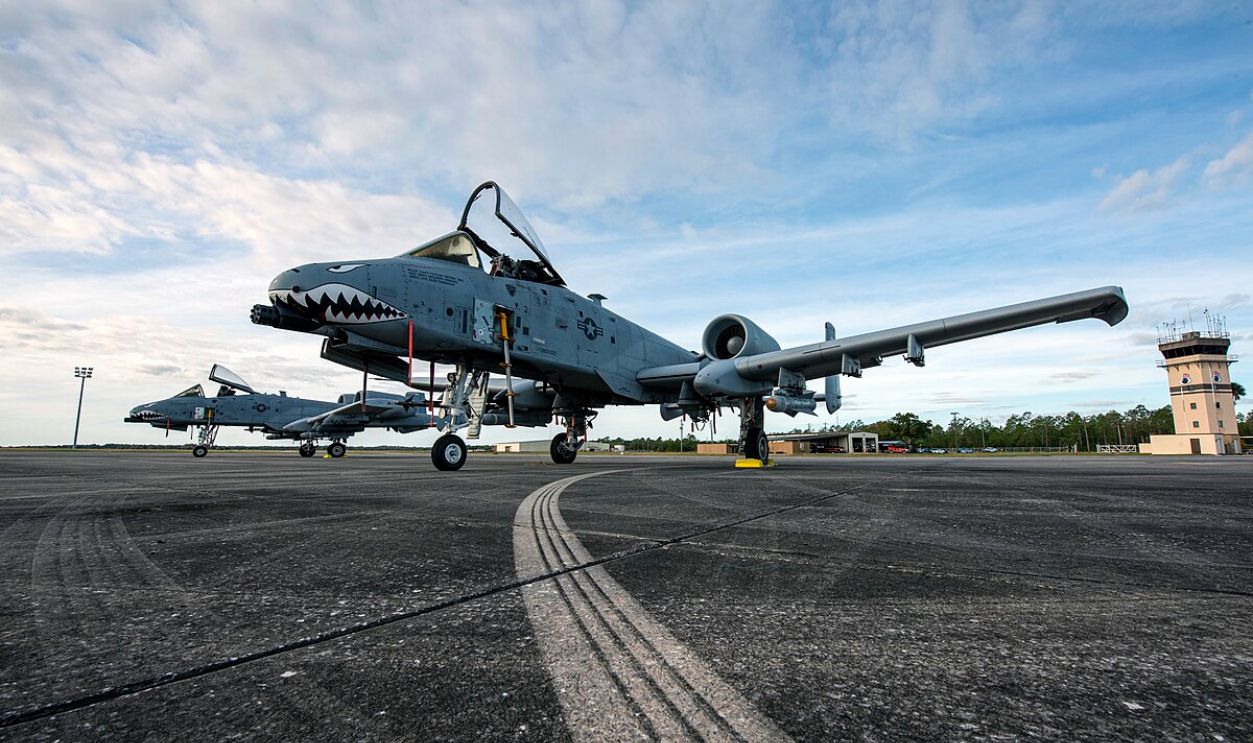 Courtney Sebastianelli, Wikimedia Commons
Courtney Sebastianelli, Wikimedia Commons
Finally, Break And Taxi
The touchdown starts when the landing gear contacts the ground first, followed by the nose gear. Once the entire craft is on the ground, break using reverse thrust. Finally, take a deep breath, exit the runway, and taxi to the parking area.
 Trina R. Flannagan, Wikimedia Commons
Trina R. Flannagan, Wikimedia Commons
Turn Engine Off
The moment you park, the ground crew will secure the aircraft using chocks around the wheels immediately after you turn off the engines. They’ll also install safety pins in the landing gear and other critical systems.
 Sgt. Samuel Morse, Wikimedia Commons
Sgt. Samuel Morse, Wikimedia Commons
Bravo, You’ve Made It
Remember the ladder you used to climb the “bathtub?” By the time you open the canopy, the ground crew will already have it awaiting your descent. If this was your first time flying, you must be shaking with adrenaline.
 Steve Lynes, CC BY 2.0, Wikimedia Commons
Steve Lynes, CC BY 2.0, Wikimedia Commons
Post-Flight Inspection Begins
The ground crew starts the inspection by checking for damages and documenting them. Whatever they can fix there, they do so; otherwise, it’s scheduled for later. If it’s needed for combat, they refuel and replenish the aircraft.
 Ericka Engblom, Wikimedia Commons
Ericka Engblom, Wikimedia Commons
The Debrief
When some of the crew is busy with the assessment, you and the rest hold a debrief session to discuss the mission, any issues you face, and the A-10’s performance. On a good day, it’s a celebratory session!
 Tech. Sgt. Enjoli Saunders, Wikimedia Commons
Tech. Sgt. Enjoli Saunders, Wikimedia Commons


